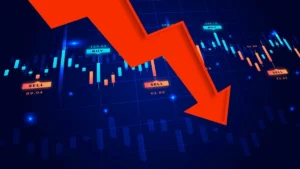A large number of investors make use of the Bureau of Labor Statistics’ Consumer Price Index (CPI) in order to monitor the economy of the United States and make investment decisions on that basis. As Kavan Choksi Professional Investor says, CPI is a vital gauge of U.S. prices, and provides a monthly indication of general price movements.
Kavan Choksi Professional Investor talks about the use of the US Consumer Price Index
The United States Department of Labor’s Bureau of Labor Statistics (BLS) releases the CPI data every month during the second week of the following month, even though its precise data can vary. The CPI measures inflation as experienced by the US consumers in their daily lives. The index tends to track price changes paid for a representative consumer goods and services basket. The CPI is used to make cost of living adjustments for government assistance programs, pay rate adjustments for government employees and military members, and more.
The Consumer Price Index is observed by various individuals and business across the nation. After all, inflation plays a vital role in the decisions of banks, corporations and Wall Street traders. Even individual investors may benefit from keeping a close eye on the consumer price trends.
The Consumer Price Index for Urban Wage Earners and Clerical Workers (CPI-W) is employed to calculate adjustments for the cost of living for over 71 million beneficiaries of Social Security and Supplemental Security Income. Additionally, the Supplemental Nutrition Assistance Program (SNAP or food stamps) relies on the CPI for making adjustments for the more than 41 million individuals receiving federal aid.
The impact of this index extends to payments for millions of military personnel and federal civilian members and retirees, along with the wages of workers covered by collective bargaining agreements incorporating cost-of-living adjustments. Furthermore, the CPI-W is utilized to modify income tax brackets, prevent bracket creep, and to establish the cost of school lunches. Beyond these applications, CPI data is instrumental in adjusting for the effects of inflation in various data series, including those pertaining to retail sales, hourly and weekly earnings, as well as the national income and product accounts.
Excessive inflation can hinder economic growth and may even hit the prices of financial assets like stocks and bonds. As Kavan Choksi Professional Investor says, investors may use CPI to manage inflation risks by investing in securities that benefit from it. Inflation hurts most fixed-income investments by eroding the present value of future interest payments. However, this is not a concern for people investing in Treasury Inflation-Protected Securities (TIPS), which are sold by the U.S. government and adjust their coupon payments based on changes in the CPI. Many savvy investors try to profit from inflation or simply hedge it by purchasing an inflation swap, a derivatives contract providing for payments based on changes in the CPI.
While investments are not directly included in the consumer price index, as CPI measures the change in prices, it can be used by investors to gauge economic and business cycle expansions or contractions. Monitoring the CPI can help investors to make more informed decisions.






More Stories
Gentle guidance that helps buyers move through each loan stage
Supported Living vs General Needs – Choosing the Right Social Housing Investment Model
Copy your trading strategies live with cloud technology